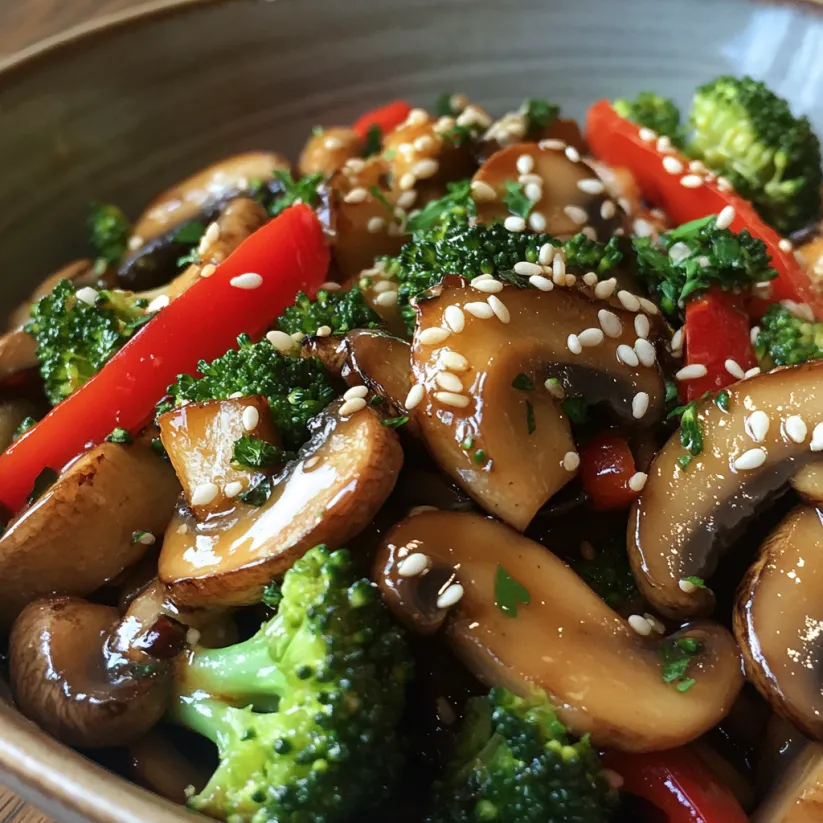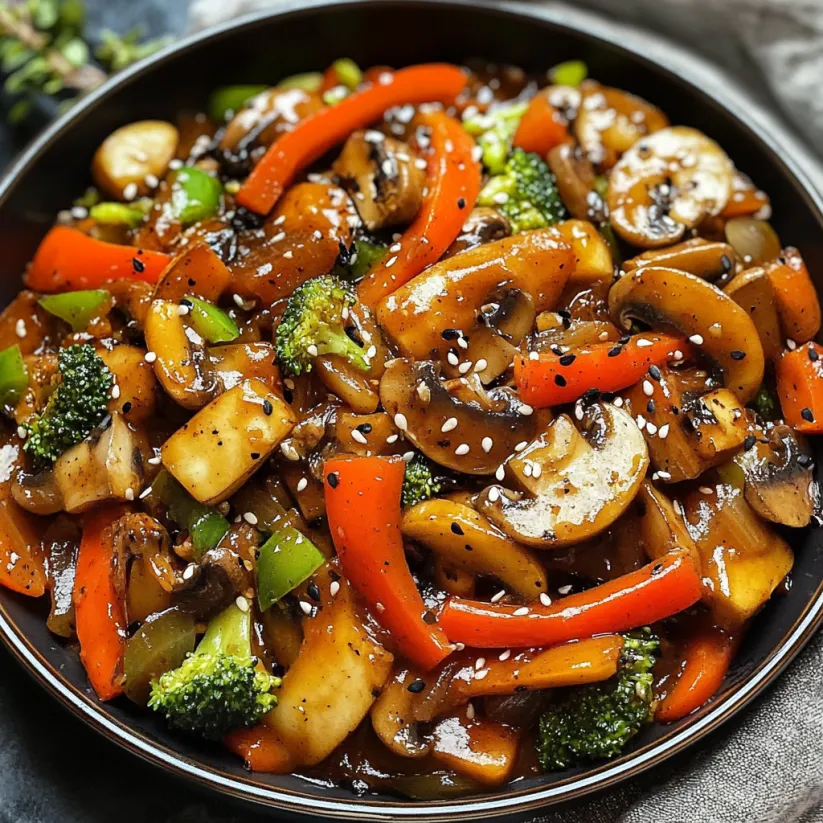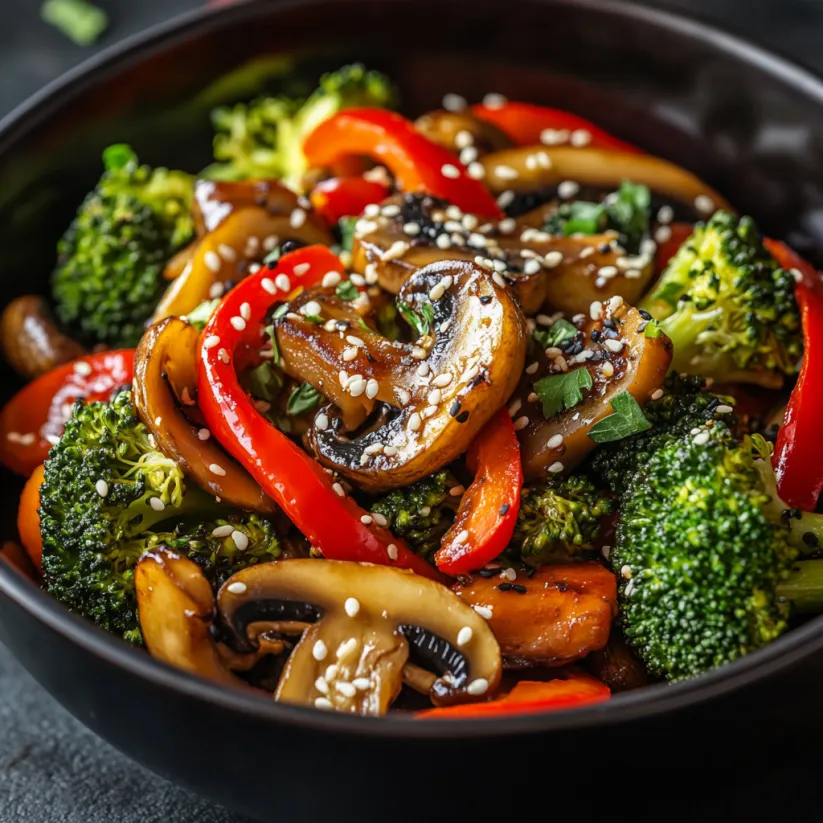 Bookmark
Bookmark
This veggie stir-fry is my kitchen secret on weeknights when dinner needs to be fast, healthy, and genuinely tasty. With only ten trusty ingredients and fifteen minutes, you can transform a pile of colorful veggies into something that feels special every single time. Stir-frying could not be more forgiving—you can swap veggies, try new sauces, or throw in whatever is left in the fridge. I reach for this recipe when my schedule is packed or I want a lighter meal that makes everyone at my table happy.
All it took was one busy night of chopping and tossing everything into the wok to convince my family that veggie stir-fry could be a dinner winner. Now, even the pickiest eaters at home ask for double helpings.
Ingredients
- Broccoli florets: provide fiber and vibrant crunch; choose heads with tight clusters and deep green color
- Sliced carrots: add sweetness and color; look for firm, bright carrots with no cracks
- Mushrooms: offer savory depth and a meaty bite; pick smooth, dry caps with no slimy spots
- Red or yellow bell peppers: add natural sweetness and a pretty pop of color; seek out glossy, heavy peppers with tight skin
- Sugar snap peas or snow peas: give fresh, juicy snap; pick peas that are plump but not bulging
- Baby corn spears: bring tenderness and a subtle sweetness; use jarred or canned for convenience
- Water chestnuts: offer a refreshing crunch; select canned versions packed in water for best results
- Low sodium soy sauce: is your umami-packed base; taste before buying to find a brand you actually like
- Sesame oil: provides aroma and toasty flavor; always reach for toasted sesame oil for real depth
- Fresh ginger and garlic: bring zing and warmth; make sure both are firm with no soft spots and peel the ginger just before mincing
Pick the brightest veggies in the bin and smell your ginger—freshness is everything here.
Step-by-Step Instructions
- Prep the Ingredients:
- Chop all vegetables into even pieces no larger than two inches for quick and uniform cooking. Slice carrots diagonally, cut broccoli into small florets, and slice mushrooms thinly
- Sauté the Aromatics:
- In a large wok or skillet over medium-high heat, add a drizzle of sesame oil. Add finely minced ginger and garlic. Stir constantly for one to two minutes until fragrant, releasing their essential oils
- Cook the Firm Vegetables:
- Start with the firmest ingredients such as carrots and broccoli. Stir-fry these for two to three minutes, turning often so they cook quickly but keep their bite
- Add the Softer Vegetables:
- Toss in mushrooms, bell peppers, snap peas, and water chestnuts next. Keep the heat high and stir continuously for another three minutes so everything cooks through quickly but keeps some crunch
- Make and Add the Sauce:
- Mix soy sauce with a splash of water or broth in a small bowl. For extra flavor, add a teaspoon of brown sugar or a dash of rice vinegar. If you want a thicker sauce, stir in a teaspoon of cornstarch. Pour the sauce over the stir-fried veggies and keep tossing everything for two to three minutes until glossy and well coated
- Finish and Serve:
- Taste and adjust seasoning if needed. Remove from heat the moment the veggies are crisp-tender. Serve hot over steamed rice, noodles, or just as they are for a lighter meal
 Bookmark
Bookmark
Every time I make this, I love adding extra snap peas because their sweetness brings everything together. One rainy Saturday, my daughter insisted on adding every vegetable from the crisper, and it turned out to be the most colorful bowl we ever made—these kinds of moments make stir-frying more than just cooking for me.
Storage Tips
For best texture, let the stir-fry cool before storing it in an airtight container in the fridge. It is perfect for up to three days. If you plan to meal prep, keep the sauce separate from the veggies. This prevents everything from turning soggy and keeps the crunch and color of your vegetables when reheated.
Ingredient Substitutions
If you are missing baby corn or water chestnuts, try canned bamboo shoots or sliced zucchini for extra crunch. For a gluten-free meal, swap out conventional soy sauce with tamari or coconut aminos. You can use frozen vegetable mixes in a pinch—just be sure to dry them well so you do not water down your stir-fry.
Serving Suggestions
I love serving stir-fry over steaming bowls of jasmine rice or brown rice. You can also try it on rice noodles or even cauliflower rice for a lighter option. Add protein with crispy tofu cubes, edamame, grilled chicken, or shrimp for a heartier meal. Toasted sesame seeds or chopped cashews sprinkled over the top make everything pop.
 Bookmark
Bookmark
Cultural Context
The roots of stir-frying trace back centuries in East Asian kitchens. The technique was meant to cook food very quickly over high heat to preserve nutrients and color. In my home, making stir-fry is about connecting with family—everyone can pick their favorites and learn to use chopsticks together. It is a simple, joyful way to help kids try new vegetables.
Frequently Asked Questions
- → What are the best vegetables for stir-frying?
Broccoli, bell peppers, carrots, mushrooms, snap peas, and onions are excellent choices. These offer varied textures and stay crisp when cooked quickly.
- → How do I keep vegetables crisp in a stir-fry?
Cook on high heat with a hot pan, stir frequently, and add firmer vegetables first, softer ones later. Avoid overcrowding your pan to keep veggies from steaming.
- → Can I use frozen vegetables for stir-frying?
Yes, frozen vegetables work well for quick stir-fries. Thaw slightly or cook straight from frozen; just ensure high heat so moisture evaporates fast.
- → What protein options work well with veggie stir-fry?
Popular choices include tofu, chicken, shrimp, edamame, or tempeh. These cook quickly and complement the vegetables and sauce.
- → How should I store leftover stir-fry?
Cool completely, then store in an airtight container in the fridge for 2-3 days. Reheat in a skillet to retain texture, adding a splash of water if needed.
- → What goes well with veggie stir-fry?
Serve over jasmine or brown rice, quinoa, or noodles. Add a sprinkle of sesame seeds or chopped peanuts for extra crunch and flavor.
